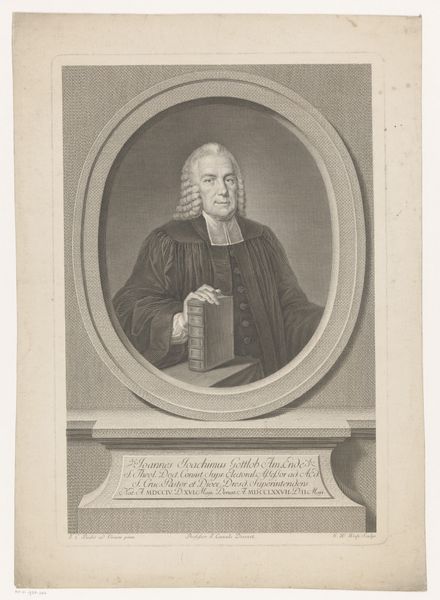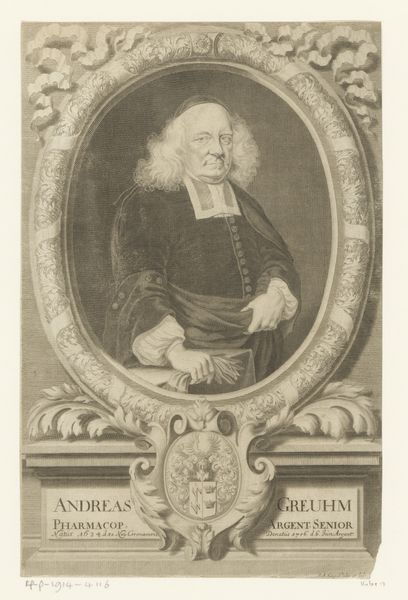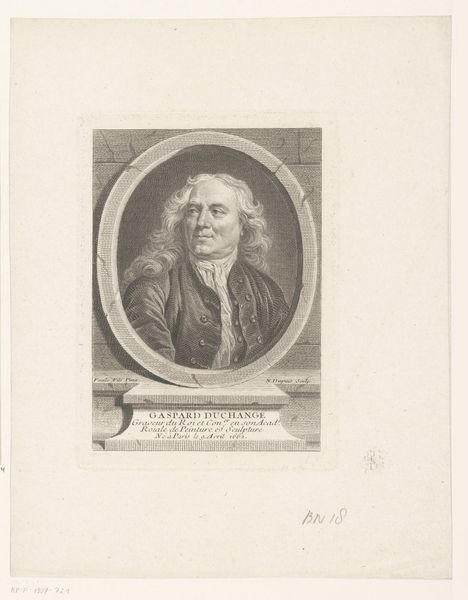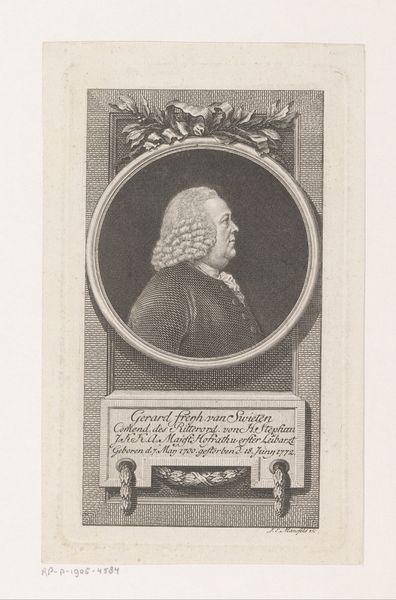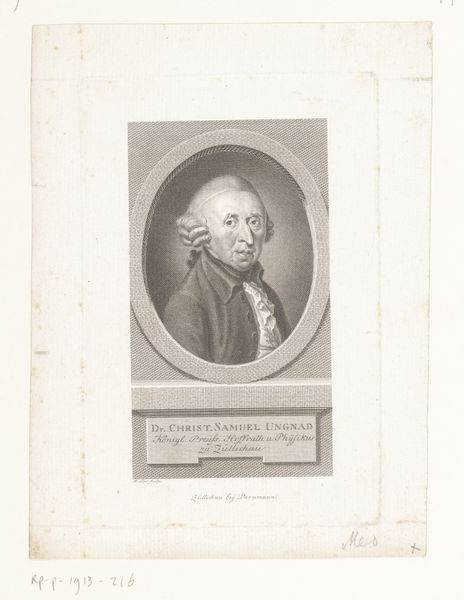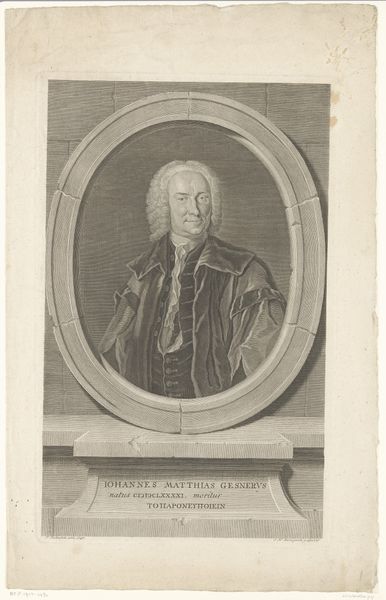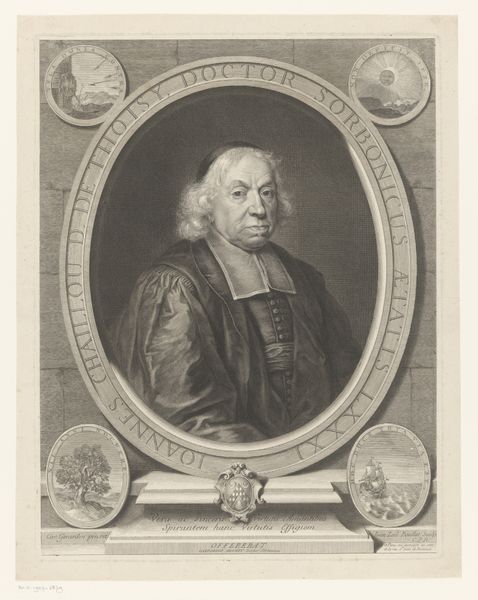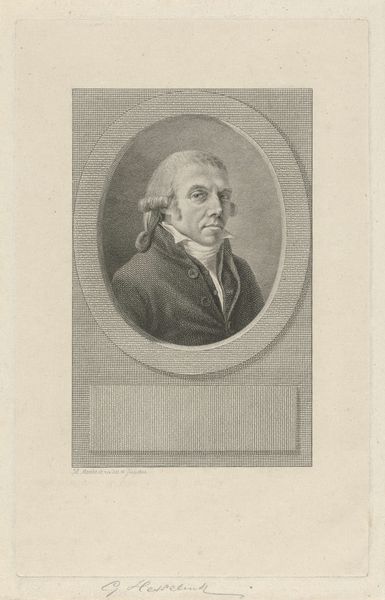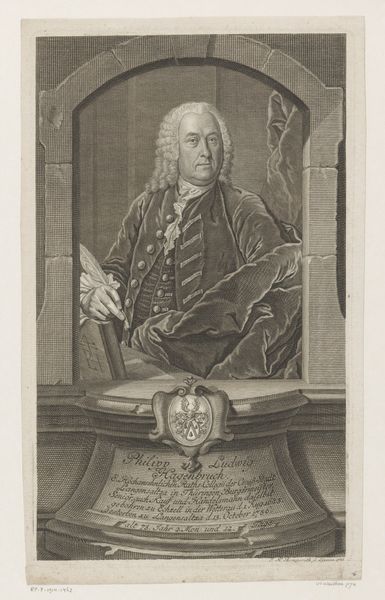
engraving
#
portrait
#
baroque
#
history-painting
#
academic-art
#
engraving
Dimensions: height 159 mm, width 101 mm
Copyright: Rijks Museum: Open Domain
Curator: Johann Martin Bernigeroth created this engraving, a portrait titled "Portret van Daniel Rosenfeldt," back in 1748. It’s part of the Rijksmuseum's collection. What strikes you immediately? Editor: It’s a very serious portrait. The tight framing, the dark robes, the solemn expression… it speaks of power and perhaps a little bit of somber reflection. Curator: Absolutely. The Baroque era favored dramatic contrasts and rich symbolism. We see Rosenfeldt, a clergyman, holding what looks like a bible or prayer book, emphasizing piety. Consider also how portraiture functioned in the 18th century. It was a declaration of status and a carefully constructed projection of identity. The elite classes and clergy members used art to reinforce the socio-political hierarchies of the time. Editor: The book in his hand, encased in what looks like dark leather, stands out. It grounds the image. It is his attribute, defining not just his profession but, perhaps, his inner world. Does that oval frame have symbolic value in this period? I imagine circles signified divine cycles or protection... Curator: Interesting point. While circles have that historical resonance, the oval frame here also conforms to a convention of Baroque portraiture. It serves to focus our gaze while subtly distancing Rosenfeldt from the viewer. Think about how the Reformation impacted the visual landscape of the church. By this time, visual representations of religious figures served as important affirmations of faith and social roles, which were of course implicated in gender, class and access to power. Editor: That's well taken. And even his wig… isn't that symbolic in its own way? Such extravagant display. Curator: Precisely. Wigs were essential markers of social status during this period. Rosenfeldt's attire serves to emphasize his standing within the church. The artist reinforces the conventional indicators of position, constructing the image of an upstanding and respected clergyman within a precise societal framework. Editor: Looking at the name inscribed at the base, it seems designed to underscore authority. What does it say about the intended audience and how they are supposed to receive it? Curator: Certainly. These portraits functioned within very specific networks. Think about other social inequalities in Bernigeroth's time and what access existed to portraiture like this. What narratives were included, what narratives were left out, who had the right of self-representation? This opens interesting new avenues for exploring this portrait. Editor: Avenues well worth pursuing. Thank you. Curator: Thank you. It’s through these multifaceted lenses that art truly reveals itself.
Comments
No comments
Be the first to comment and join the conversation on the ultimate creative platform.
